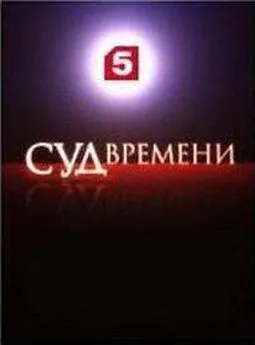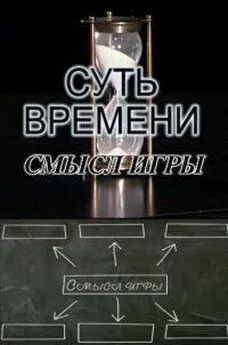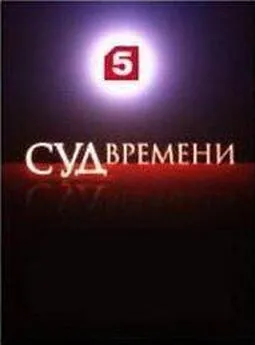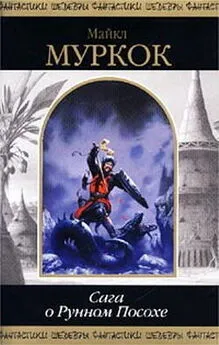'Танелорн' Журнал - 'Танелорн' (выпуски 1-7)
- Название:'Танелорн' (выпуски 1-7)
- Автор:
- Жанр:
- Издательство:неизвестно
- Год:неизвестен
- ISBN:нет данных
- Рейтинг:
- Избранное:Добавить в избранное
-
Отзывы:
-
Ваша оценка:
'Танелорн' Журнал - 'Танелорн' (выпуски 1-7) краткое содержание
'Танелорн' (выпуски 1-7) - читать онлайн бесплатно полную версию (весь текст целиком)
Интервал:
Закладка:
RZ's first published story was "Passion Play" for AMZ in 1962, and for several years he was prolific in shorter forms, for a time using the pseudonym Harrison Denmark when stories piled up in AMZ and Fantastic, and doing his finest work at the novelette/novella length; he assembled the best of this early work as Four for Tomorrow (coll 1967; vt A Rose for Ecclesiastes 1969 UK) and The Doors of His Face, the Lamps of His Mouth, and Other Stories (coll 1971). The magazine titles of his first 2 books were as well known as their book titles, and the awards given them were attached to the magazine titles. THIS IMMORTAL (1965 FSF as ". . . And Call me Conrad"; exp 1966) won the 1966 HUGO for Best Novel; THE DREAM MASTER (1965 AMZ as "He Who Shapes"; exp 1966) -- the magazine version was eventually released as He Who Shapes (1989 dos) -- won the 1966 NEBULA for Best Novella; and in the same year The Doors of His Face, the Lamps of His Mouth (1965 FSF; 1991 chap) won a Nebula for Best Novelette. Taken together, the 3 tales make up a portrait of RZ's central worlds, themes and protagonist, a portrait which would be repeated, with sometimes lessened force, for decades. The VENUS on which "Doors" is set, like most of RZ's worlds to come, is fantastical, densely described, almost entirely "unscientific"; the plot intoxicatingly dashes together myth and literary assonances -- in this case Herman MELVILLE's Moby-Dick (1851) -- and sex. THIS IMMORTAL takes place in a baroquely described post-HOLOCAUST Earth which has become a kind of theme-park for the ALIEN Vegans; in this shadowy realm of belatedness and human angst, the immortal Conrad Nomikos serves ostensibly as Arts Commissioner but turns out to be in a far more telling sense the curator of the human enterprise, for, despite the US thriller idioms he uses in his personal speech, he closely resembles Herakles -- whose Labours the plot of the novel covertly replicates -- but is certainly both the Hero of a Thousand Faces and the Trickster who mocks the high road of myth, redeemer and road-runner both. Under various names, this basic figure crops up in most of RZ's later books: wisecracking, melancholic, romantic, sentimental, lonely, metamorphosing into higher states whenever necessary to cope with the plot, and in almost every sense an astonishingly sophisticated wish-fulfilment.
In THE DREAM MASTER -- for one of the few times in his career -- RZ presented the counter-myth, the story of the metamorphosis which fails, the transcendence which collapses back into the mortal world. In THIS IMMORTAL, RS had already evinced a tendency to side, perhaps a little too openly, with complexly gifted, vain, dominating, immortal protagonists, and, as THE DREAM MASTER begins, his treatment of psychiatrist Charles Render seems no different. Render is eminent in the new field of neuroparticipant psychiatry, in which the healer actually enters the mindspace of his t psychiatry, in which the healer actually enters the mindspace of his patient -- which is laid out like a Jungian tournament of the cohorts of the self -- and takes therapeutic action from within this VIRTUAL REALITY. But Render becomes hubristic, and when he enters the mind of a congenitally blind woman, who is both extremely intelligent and insane, his attempts to cope with her intricate madness from within gradually expose his own deficiencies as a person, and he becomes subtly and terrifyingly trapped in a highly plausible psychic cul-de-sac. All the sf apparatus of the story, and its sometimes overly baroque manner, were integrated into RZ's once-only unveiling of the nature of a human hero who could not perform the moult into immortality.
After these triumphs, LORD OF LIGHT (1967), which won a 1968 Hugo, could have seemed anticlimactic, but it is in fact his most sustained single tale, richly conceived and plotted, exhilarating throughout its considerable length. Some of the crew of a human colony ship, which has deposited its settlers on a livable world, have made use of advanced technology to ensconce themselves in the role of gods, selecting those of the Hindu pantheon as models. But where there is Hinduism, the Buddha -- in the shape of the protagonist Sam -- must follow; and his liberation of the humans of the planet, who are mortal descendants of the original settlers, takes on aspects of both Prometheus and Coyote the Trickster. At points, Sam may seem just another of RZ's stable of slangy, raunchy, over-loved immortals; but the end effect of the book is liberating, wise, lucid.
None of RZ's subsequent sf quite achieved the metaphorical aptness of his first 3 novels, but Isle of the Dead (1969) and Creatures of Light and Darkness (1969) both embody complex plots, mythic resonance and a fluent intensity of language. Damnation Alley (1969), a darker and coarser tale, depicts a post-holocaust motor-cycle-trek across a vicious USA; it was filmed with many changes as DAMNATION ALLEY (1977). Jack of Shadows (1971), though set on a planet which keeps one face always to its sun, has all the tonality and dream-like plotting of a fantasy: a fine one.
From the mid-1970s on, RZ's work maintained a certain consistency, and always threatened to explode in the mind's eye; but did not quite do so. Deus Irae (1976), with Philip K. DICK, is uneasy. Doorways in the Sand (1976) is a delightfully complicated chase tale, involving a MCGUFFIN and an entire galactic community. My Name is Legion (fixup 1976) -which included the Hugo- and Nebula-winning Home is the Hangman (1975 ASF; 1990 chap dos) -- puts into definitive form the Chandleresque version of the RZ HERO. Roadmarks (1979) engrossingly fleshes out the notion that the turnings off a metaphysical freeway might constitute turnings in time not space. The Last Defender of Camelot (1980 chap), which became the title story of The Last Defender of Camelot (coll 1980; with 4 stories added, exp 1981), Unicorn Variations (coll 1983), which included the Hugo-winning "Unicorn Variation" (1981), and Frost and Fire (coll 1989) -- which contained "24 Views of Mount Fuji" (1985) and "Permafrost" (1986), both Hugo-winners -- represent competent later short stories. Eye of Cat (1982) is a proficient sf thriller with a striking alien and some effective Navajo venues. Had it not been for the romantic sublimities of his first years, RZ's career might have been seen as triumphant.
He is not, however, regarded as a writer whose later works have fulfilled his promise, and it may be that he has suffered the inevitable price of writing at the peak of intensity and conviction when young: that he may already have put into definitive form the heart of what exercises him as a man and as a writer. The plummets into INNER SPACE, the sensitized baroque intricacy of his rendering of the immortal longings of men who all too easily slip into secret-guardian routines, the rush into metamorphosis: all have had their cost. Though his Amber books and some other fantasies (see listing below) exhibit a sustained freshness, RZ's sf readership has been left with the inspired facility of an extremely intelligent writer who does not desperately need to utter another word. [JC]
Other works: Today We Choose Faces (1973); To Die in Italbar (1973), featuring Francis Sandow, the protagonist of Isle of the Dead; Poems (coll 1974 chap); Bridge of Ashes (1976); The Illustrated Zelazny (graph coll 1978; rev vt The Authorized Illustrated Book of Roger Zelazny 1979); the Changing Land sequence, comprising The Bells of Shoredan (1966 Fantastic; 1979 chap), The Changing Land (1981) and Dilvish, the Damned (coll of linked stories 1982); For a Breath I Tarry (1966 NW; 1980 chap); When Pussywillows Last in the Catyard Bloomed (coll 1980 chap), poetry; the Wizard World sequence, comprising Changeling (1980) and Madwand (1981), both assembled as Wizard World (omni 1989); Today We Choose Faces/Bridge of Ashes (omni 1981); To Spin is Miracle Cat (coll 1981), poems; Coils (1982) with Fred SABERHAGEN; A Dark Traveling (1987), a juvenile; The Black Throne (1990) with Saberhagen, a RECURSIVE fantasy starring Edgar Allan POE; The Mask of Loki (1990) with Thomas T. THOMAS; The Graveyard Heart (1964 AMZ; 1990 chap dos); Bring Me the Head of Prince Charming (1991) with Robert SHECKLEY; Gone to Earth (coll dated 1991 but 1992); Flare (1992) with Thomas, describing a deadly solar flare; Way Up High (1992 chap); Here There be Dragons (1992 chap); A Night in the Lonesome October (1993); If at Faust You Don't Succeed (1993) with Robert Sheckley; Wilderness (1994) with Gerald Hausman, associational.As Editor: Nebula Award Stories Three (anth 1968).About the author: "Faust & Archimedes" in The Jewel-Hinged Jaw: Notes on the Language of Science Fiction (coll 1977) by Samuel R. DELANY; Introduction by Ormond Seavey to the 1976 GREGG PRESS printing of THE DREAM MASTER; Roger Zelazny (1980) by Carl B. YOKE; Roger Zelazny: A Primary and Secondary Bibliography (1980) by Joseph L. Sanders; A Checklist of Roger Zelazny (1990 chap) by Christopher P. STEPHENS.See also: ACE BOOKS; AMAZING STORIES; ASTOUNDING SCIENCE-FICTION; COMICS; CRIME AND PUNISHMENT; CYBERNETICS; ESCHATOLOGY; ESP; FANTASY; GALAXY SCIENCE FICTION; GAMES AND SPORTS; GODS AND DEMONS; GOTHIC SF; IMMORTALITY; ISAAC ASIMOV'S SCIENCE FICTION MAGAZINE; TheMAGAZINE OF FANTASY AND SCIENCE FICTION ; MARS; MATTER TRANSMISSION; MESSIAHS; MUSIC; OMNI; PARALLEL WORLDS; PARANOIA; PARASITISM AND SYMBIOSIS; PSI POWERS; REINCARNATION; RELIGION; ROBOTS; SCIENCE FANTASY; SUPERMAN; SUPERNATURAL CREATURES; TERRAFORMING; UNDER THE SEA
4. РАЗМЫШЛЕHИЯ ????????????????????????????????????????????????????????????????????????????????
N o m i n e R e q u i u m
или
РАЗМЫШЛЕHИЯ ВСЛУХ
At the door to the House of Darkness
lies a pair of red coyotes with heads reversed.
Nayenezgani parts them with his dark staff
and comes in search of me.
With lightning behin him,
with lightning before him,
he comes in search of me,
with a rock crystal and a talking _ketahn_.
Beyond, at the corners of the door
of the House of Darkness,
lie two red bluejeys with heads reversed.
With lighning behind him,
with lightning before him,
He parts them with his dark staff
and comes in search of me.
Farther, at the fire-pit of the Dark House,
lie two red hoot-owls with heads reversed.
He parts these with his staff
and comes in search of me,
with rock crystal and the talking _ketahn_.
At the center of the Darkness House
where two red screech-owls lie with heads reversed,
Nayenezgani casts them aside
coming in search of me,
lightning behind him,
lightning before him.
Bearing a rock crystal and talking _ketahn_,
he comes for me.
From the center of the earth he comes.
Farther...
Evil-Chasing Prayer.
Вот так же, сиянием голубой молнии осветил меня своим творчеством Роджер, подарив миры красоты и грации, силы и воли, разума и надежды. Hоша творца миров тяжела, но только благодаря этой тяжести возможно из черного слоистого угля получить блестящий кристалл света, алмаз мечтаний. Что же, ему этот подвиг был по силам. Я совсем не осведомлен о событиях его жизни, что-ж, возможно это и к лучшему, ведь у меня есть возможность посмотреть на автора, опираясь только на его творения, то, что вышло из под его пера, а скорее всего не пера, а клавиш машинки, и с таким опозданием дошло до нас.
Читать дальшеИнтервал:
Закладка:




![Майкл Муркок - Хроники замка Брасс [3 книги: Граф Брасс; Защитник Гараторма; В поисках Танелорна]](/books/1062369/majkl-murkok-hroniki-zamka-brass-3-knigi-graf-br.webp)
